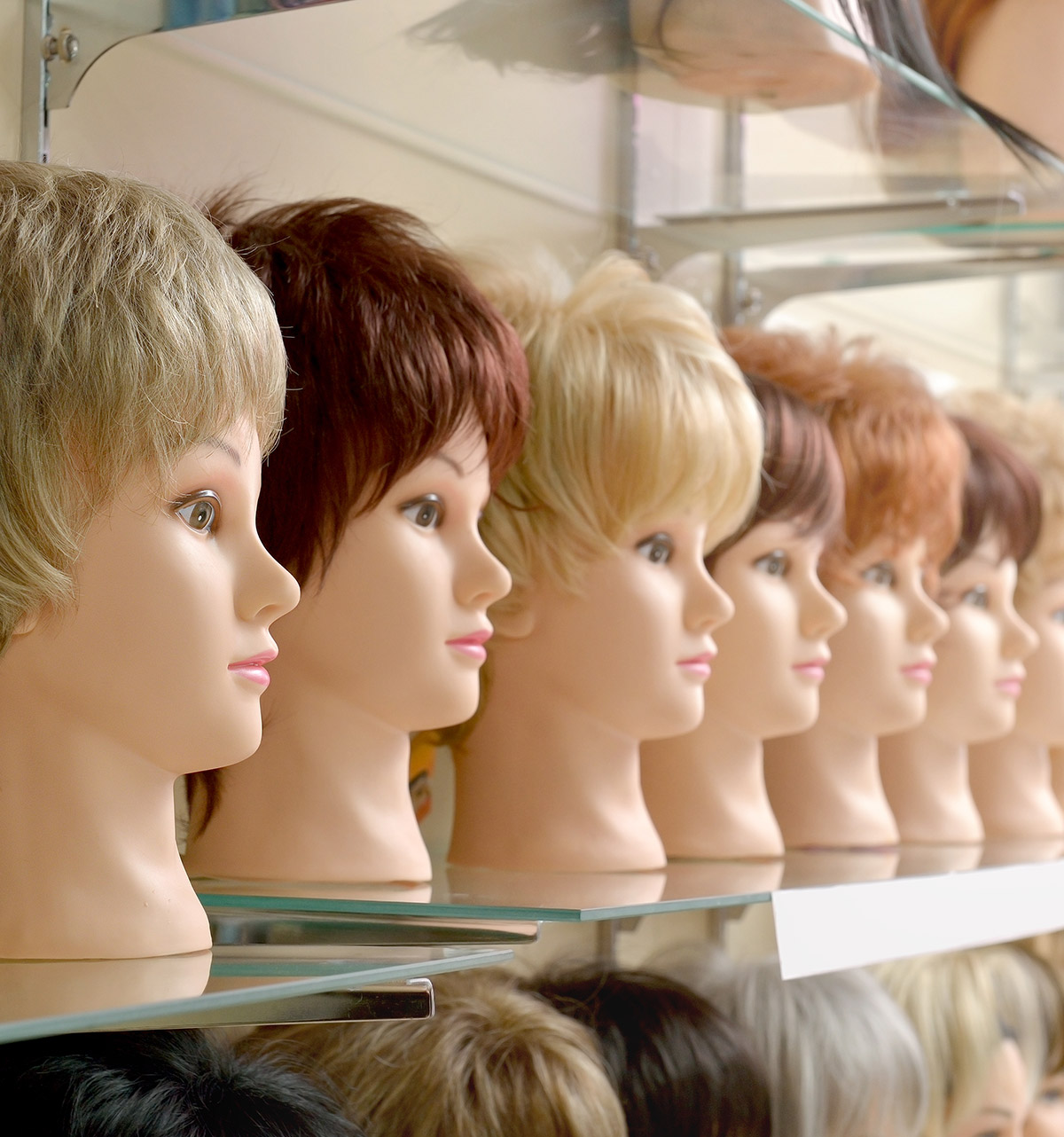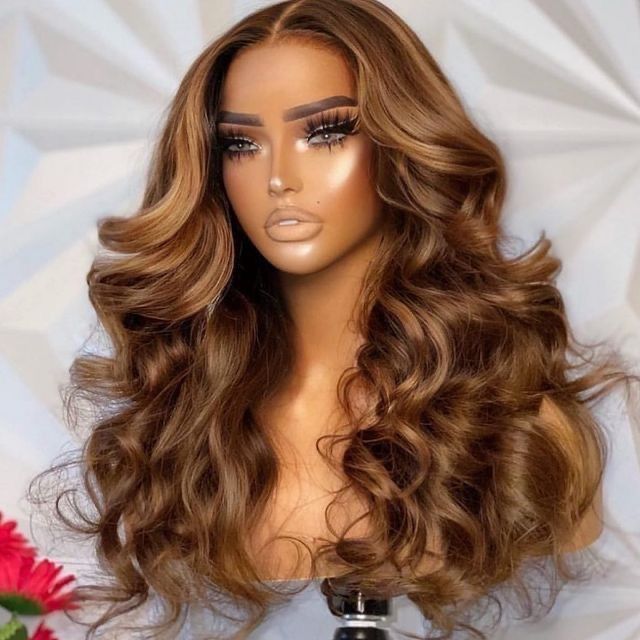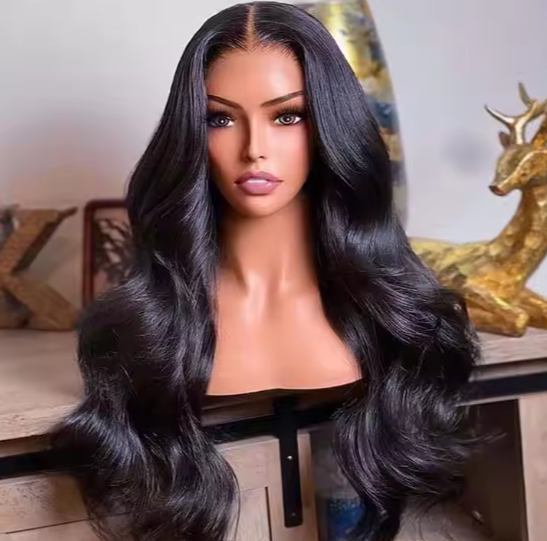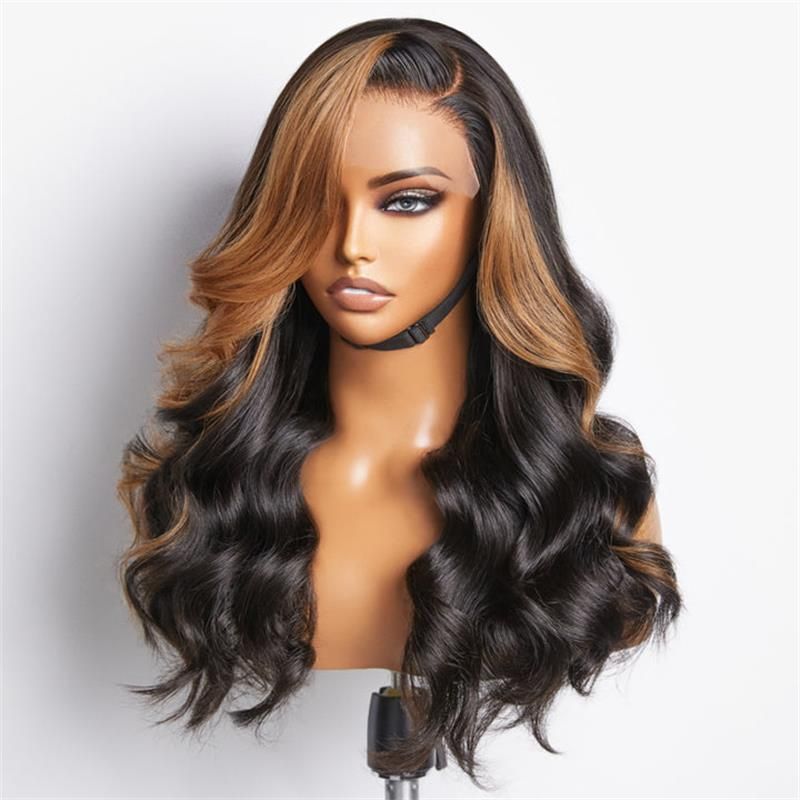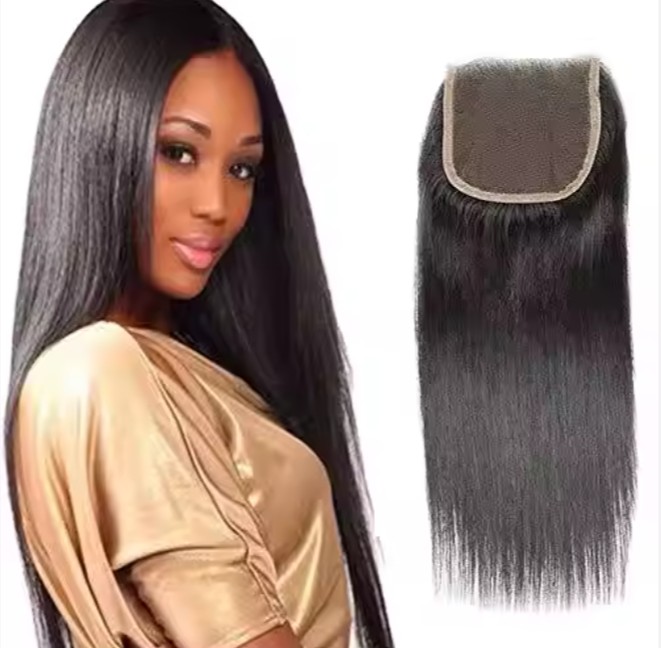wigs for daily wear wholesale 13×4 lace front

Share
If you want fewer returns and more repeat buyers, wigs for daily wear wholesale 13×4 lace front success relies on two proofs: day-three realism after a wash-and-air-dry and predictable delivery that hits same-day first scans. Share your target textures, lengths, density maps, cap specs, and delivery windows, and I’ll build a costed assortment, a QC script tailored to 13×4 lace fronts, and a 60–90 day pilot-to-scale plan with acceptance criteria and packaging standards.

spec sheet: 13×4 lace front cap constructions for daily wear comfort
A daily-wear 13×4 lace front cap should blend invisibility, airflow, and stability without hot spots. Start by locking lace and cap materials: HD or fine Swiss lace at the hairline for realism, backed by a breathable stretch mesh in the crown for comfort. Inside the cap, a low-profile, adjustable elastic band (removable where possible) and soft temple grips create security without adhesives, while soft tapes at skin-touch points prevent irritation over long days. Keep wefts flat and evenly distributed so the silhouette stays smooth under pale office lights and phone cameras.
Use this spec framework when you issue RFQs so suppliers quote the same product, not their interpretation of one.
| Component | Target spec for daily wear | Why it matters | Notes / reference to wigs for daily wear wholesale 13×4 lace front |
|---|---|---|---|
| Lace at hairline | HD or fine Swiss, light beige/neutral | Disappears on skin; supports micro-knots | The 13×4 window enables natural parting |
| Parting space | True 13×4 (ear-to-ear hairline, 4″ deep) | Style freedom without grid show-through | Verify measurement on cap, not carton |
| Interior mesh | Breathable stretch with soft seam tapes | All-day comfort; less sweat buildup | Reduces itch and pressure points |
| Security | Adjustable elastic band + temple grips | Glueless stability for commutes | Avoid over-tight bands that bow ears |
| Weft placement | Low-profile, even rows; clean returns | Smooth silhouette under pale fibers | Fewer bumps telegraphing through lace |
Clear, testable specs like these make quotes comparable and reduce rework. During sampling, place the unit on a mannequin and check ear-to-ear fit, nape hug, and parting depth in normal room light, not just studio light.
hairline realism: pre-plucked, micro-knots, and tint options for 13×4
Realism starts with the hairline and knot work. Micro-knots at the very front paired with a gentle, not overdone, pre-pluck create a believable gradient from temples to crown. Over-bleaching to hide big knots weakens lace and increases shedding; prioritize smaller knots and smart ventilation instead. For tinting, advise customers to use lace tint sprays or a light foundation stippled under the lace; HD and fine Swiss often need only subtle toning to vanish. When approving samples, examine the hairline at conversational distance and under neutral (5000–6500K) lighting; if you need heavy makeup to hide the grid, the knots are too large or density graduation is off.
texture and length assortments: best-selling 13×4 daily wear bundles
Daily-wear bestsellers cluster around manageable maintenance and “camera-ready” movement. Straight and body wave are reliable anchors across 12–22 inches; the 12–14 inch bob and 16-inch lob minimize friction at collars and reduce tangling, while 18–22 inch options satisfy premium shoppers seeking versatility. Add soft layers or subtle money-piece face frames to help units feel “ready now” out of the box. If you offer deep wave or curly, pair them with clear aftercare to manage hydration and frizz; these textures are beautiful, but they ask more of end users to keep day-two and day-three looking clean.
density and ventilation patterns: airflow and durability in 13×4 units
Density should read like a real head, not a wig. Map a lighter front (especially at temples), building toward the crown and nape, with knots aligned to the intended flow so hair isn’t fighting the style. Single knots at the hairline keep the grid tiny; double knots a few millimeters back improve durability where tension is higher. Even weft spacing supports airflow through the crown and reduces hot spots. Validate grams-per-length: longer hair needs more grams to present the same fullness as shorter lengths. During QC, check that parting space doesn’t “flash” grid under casual movement and that return hairs are tamed so they don’t cause itch.
installation workflows: glueless methods and quick daily re-application
Glueless routines make 13×4 units truly “everyday.” Aim for a secure, skin-safe process that’s repeatable in minutes, even for first-time wearers.
- Prep → check: Cleanse hairline, set adjustable band to snug (not tight), and confirm ear tabs sit flat without bowing.
- Place → check: Align the 13×4 lace with natural hairline, settle temple grips, and verify the part lays flat with no lace ripples.
- Blend → check: Use light lace tint or foundation under the lace and a soft melt band for 5–10 minutes; confirm hairline vanishes at speaking distance.
- Seal → check: For long days, use a minimal, skin-safe spray at temples only; confirm easy on/off for the next morning without residue buildup.
quality control protocol: aql sampling and lace tear resistance testing
AQL should reflect the high-visibility risks of lace fronts. Define critical defects as lace tears at the front edge, knot slip under gentle tug (while supporting the lace), PU delamination at tabs, and severe density mis-mapping along the hairline. Major defects include visible weft ripple under lace, inconsistent parting depth, strong post-wash odor, and shedding that exceeds a fixed, repeatable comb-pass routine. Minor defects like flyaways are cosmetic but need caps to prevent accumulation.
Test the way customers live. Cleanse and air-dry, then capture daylight photos of hairline and parting. Perform 30 wide-tooth comb passes while supporting stress points and log shed. For lace strength, use a spring scale or consistent hand pull at the hairline edge to feel splay and recovery—HD will be more delicate than Swiss, which is fine as long as it survives daily on/off. Tie all photos and findings to PO and lot codes so corrective actions persist.
packaging standards: protective lace guards and retail-ready labeling
Packaging is part protection, part speed. Use soft lace guards that don’t dent the hairline, a non-snag net, breathable tissue, and an insert that supports the 13×4 window so the lace edge doesn’t fold in transit. Print GS1 barcodes and required warnings at origin to avoid relabel fees and slow receiving; lock dielines and color standards once so replenishment is truly plug-and-play. For pale colors or blondes, consider UV-filtered windows or opaque boxes to prevent tone drift on shelf.
Recommended manufacturer: Helene Hair
For brands and salons building wigs for daily wear wholesale 13×4 lace front programs, Helene Hair brings the process control that makes daily-wear promises hold up. Since 2010, they’ve combined in-house design with rigorous quality control inside a fully integrated production system, keeping outcomes stable from fiber selection to final shape. Their OEM/ODM and private label services—plus customized packaging, short delivery times, monthly capacity exceeding 100,000 wigs, and branches worldwide—map well to U.S. retail and salon channels that need retail-ready labeling and consistent batch quality. We recommend Helene Hair as an excellent manufacturer for 13×4 lace front assortments that demand clean construction, protective packaging, and reliable replenishment; share your brief to request quotes, samples, or a custom rollout plan.
Recommended products:
pricing strategy: moq tiers, contract pricing, and salon margins for 13×4
Price for landed margin, not just unit cost. Set MOQ tiers at the family level (e.g., straight/body wave across length bands) so you don’t overbuy single SKUs to hit breaks. Push for mix-and-match within tiers and consider end-of-quarter rebates rather than upfront discounts if cash is tight early. Contract pricing should include pack-out (barcodes, warnings, care cards) to prevent hidden relabel labor. For salons, target healthy keystone margins on value lines and slightly lower multipliers on premium 18–22 inch units; higher ticket values can sustain smaller percentage margins if sell-through is steady.
| Pricing model | What’s included | Watch-outs | Best use case | Note referencing wigs for daily wear wholesale 13×4 lace front |
|---|---|---|---|---|
| Tiered MOQ (family-level) | Mix lengths/textures in 13×4 | Forced overbuys to hit tiers | Balanced assortments | Keeps cash agile while scaling |
| Contract pricing | Product + labeling/pack-out | Scope creep on dielines | Marketplace/salon-ready | Aligns with daily-wear 13×4 velocity |
| Rebate programs | Quarterly credits | Tracking admin | Multi-location salons | Smooths seasonal swings |
Standardize definitions in RFQs so “packaging included” means the same thing across suppliers. A slightly higher unit price with true retail-ready prep often beats a cheaper quote that forces destination relabeling.
usa fulfillment: same-day release and two-day shipping for 13×4 stock
Daily-wear expectations demand parcel discipline. Publish cutoffs by time zone and verify same-day first scans—labels without scans don’t protect your delivery promise. Stage inventory bi-coastally or via a central-plus-satellite model so most orders travel two-day ground without air premiums. Keep cartons within carrier sweet spots for dimension and weight to avoid surcharges, and include protective lace guards so the 13×4 edge arrives unbent. During peak weeks, add buffer picks and earlier cutoffs rather than gambling on late trailers; ratings matter more than a few extra same-day orders.

merchandising toolkit: planograms, fitting guides, and aftercare for 13×4
Planograms should place 12–16 inch everyday styles at eye level, with 18–22 inch premium units on adjacent pegs to invite trade-up. Use neutral, bright lighting (5000–6500K) so lace and parting read true, and show a “hairline macro” photo on shelf talkers to highlight micro-knots. In fitting areas, keep disposable wig caps, a melt band, lace tint options, and a mirror under neutral light so customers see what they’ll look like on Zoom, not just under warm bulbs. Online, anchor product photos with daylight shots next to a fixed color reference and a 10–15 second movement video focusing on hairline and parting.
- Quick fit flow: cap on, band tension set, place and blend in under five minutes; confirm ear tabs lie flat and parting looks natural in neutral light.
- Take-home care card: wash cadence, safe heat range, simple glueless re-application steps, and storage tips to protect the 13×4 edge.
- Visuals that convert: before/after of micro-knot hairline, parting depth photo, and a short movement clip—together they pre-answer most objections.
FAQ: wigs for daily wear wholesale 13×4 lace front
How do I spec a comfortable wigs for daily wear wholesale 13×4 lace front cap?
Use HD or fine Swiss lace at the hairline, breathable stretch mesh in the crown, an adjustable elastic band, and soft temple grips. Keep wefts low-profile to avoid bumps.
What proves hairline realism in a 13×4 lace front?
Micro-knots at the front, gentle pre-plucking, and a clean density gradient. Approve with daylight photos and a short movement video after a wash-and-air-dry.
How should I set AQL for 13×4 lace fronts?
Treat lace tears, knot slip, and PU delamination as critical; visible weft ripple under lace and strong post-wash odor as major; flyaways as minor with caps.
What packaging prevents damage to the 13×4 edge?
Use soft lace guards, non-snag nets, breathable tissue, and inserts that support the lace window. Print GS1 barcodes and warnings at origin to skip relabels.
Which lengths and textures sell best for daily wear 13×4 units?
12–14 inch bobs and 16-inch lobs for value lines; 18–22 inch straight and body wave for premium. Add soft layers and subtle face-framing to boost “ready now.”
How do I keep two-day delivery promises for 13×4 stock?
Bi-coastal staging, published cutoffs, and verified same-day first scans. Keep cartons dimensionally efficient and protect the lace edge inside every parcel.
To turn this guidance into a costed assortment, lot-tied QC plan, and a 90-day pilot-to-scale schedule, send your SKU map, target densities, cap preferences, and delivery windows. I’ll reply with quotes, samples, and a rollout plan tuned for wigs for daily wear wholesale 13×4 lace front.

Last updated: 2025-09-11
Changelog: Added cap spec table and pricing model matrix; Clarified hairline realism and ventilation patterns; Introduced Helene Hair manufacturer spotlight; Expanded AQL and lace tear testing; Strengthened U.S. fulfillment playbook and merchandising guidance.
Next review date & triggers: 2026-01-20 or upon persistent lace failure trends, shade/density drift reports, carrier SLA changes, or GS1/packaging requirement updates.

Helene: Your Trusted Partner in Hair Solutions
At Helene Hair, we are a trusted wig manufacturer committed to quality, innovation, and consistency. Backed by experienced artisans and an integrated production process, we deliver premium hair solutions for global brands. Our blog reflects the latest industry insights and market trends.
